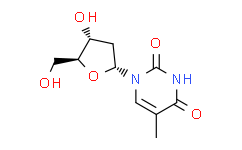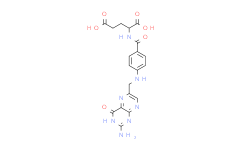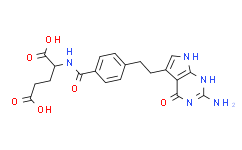Title:Inhibition of Thymidine Synthesis by Folate Analogues Induces a Fas–Fas Ligand-independent Deletion of Superantigen-reactive Peripheral T Cells
标题:叶酸类似物抑制胸苷合成诱导超抗原反应的外周T细胞的Fas-Fas配体非依赖性删除
Authors: Kamel Izeradjene, Jean-Pierre Revillard, Laurent Genestier
Published in: International Immunology
Publication Date: January 2001
Volume: 13, Issue: 1, Pages: 85-93
DOI: https://doi.org/10.1093/intimm/13.1.85
Overview
The study by Izeradjene, Revillard, and Genestier explores how folate analogues inhibit thymidine synthesis, leading to the deletion of superantigen-reactive peripheral T cells through a mechanism independent of the Fas-Fas ligand pathway. This research is significant as it provides an alternative approach to modulating immune responses, which could have therapeutic implications in autoimmune diseases and transplant rejection.
概述
Izeradjene、Revillard 和 Genestier 的研究探讨了叶酸类似物如何通过抑制胸腺嘧啶合成,引发超抗原反应性外周 T 细胞的删除,并且这种机制独立于 Fas-Fas 配体通路。该研究具有重要意义,因为它提供了一种调节免疫反应的替代方法,这在自身免疫性疾病和移植排斥治疗中具有潜在的应用价值。
Key Findings
1. Folate Analogues and Thymidine Synthesis: Folate analogues, such as methotrexate, inhibit the synthesis of thymidine, a crucial component of DNA. This inhibition affects rapidly dividing cells, including T cells reactive to superantigens.
2. Deletion of Superantigen-reactive T Cells: The study demonstrates that the inhibition of thymidine synthesis leads to the deletion of superantigen-reactive peripheral T cells. This process occurs independently of the Fas-Fas ligand (FasL) pathway, which is traditionally associated with T cell apoptosis.
3. Mechanism of Action: The research suggests that the depletion of thymidine pools causes DNA damage and subsequent cell death in T cells. The Fas-FasL-independent pathway offers a novel mechanism for T cell deletion, which could be leveraged for therapeutic purposes.
4. Therapeutic Implications: Understanding this alternative pathway could help in designing treatments that target superantigen-reactive T cells without triggering widespread apoptosis through the Fas-FasL pathway. This could minimize potential side effects and improve the efficacy of treatments for autoimmune diseases and in the context of organ transplantation.
主要发现
1. 叶酸类似物和胸腺嘧啶合成:叶酸类似物(如甲氨蝶呤)抑制胸腺嘧啶的合成,胸腺嘧啶是 DNA 的重要组成部分。这种抑制作用影响快速分裂的细胞,包括对超抗原有反应的 T 细胞。
2. 超抗原反应性 T 细胞的删除:研究表明,抑制胸腺嘧啶合成会导致超抗原反应性外周 T 细胞的删除。这一过程独立于传统上与 T 细胞凋亡相关的 Fas-Fas 配体(FasL)通路。
3. 作用机制:研究表明,胸腺嘧啶池的枯竭导致 DNA 损伤,随后引发 T 细胞死亡。Fas-FasL 独立通路提供了一种 T 细胞删除的新机制,这可以用于治疗目的。
4. 治疗意义:了解这种替代通路有助于设计针对超抗原反应性 T 细胞的治疗,而不会通过 Fas-FasL 通路引发广泛的凋亡。这可以最大限度地减少潜在的副作用,提高自身免疫性疾病和器官移植治疗的疗效。
Related Compounds and CAS Numbers
1. 甲氨蝶呤 (Methotrexate, MTX): CAS 号: 59-05-2
2. 胸腺嘧啶核苷 (Thymidine): CAS 号: 50-89-5
3. 叶酸 (Folic Acid, Vitamin B9): CAS 号: 59-30-3
4. 二氢叶酸还原酶 (DHFR) 抑制剂: 培美曲塞 (Pemetrexed): CAS 号: 137281-23-3









 沪公网安备31011402010657号
沪公网安备31011402010657号